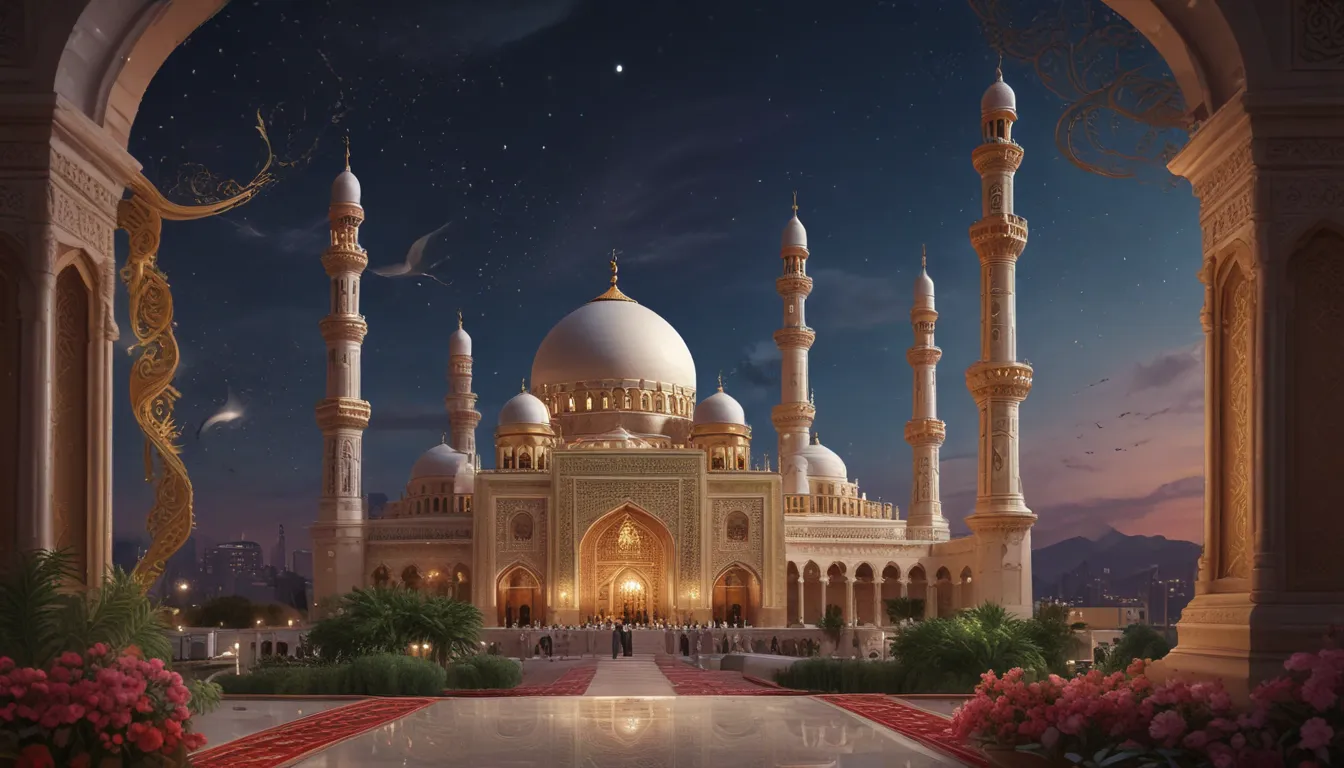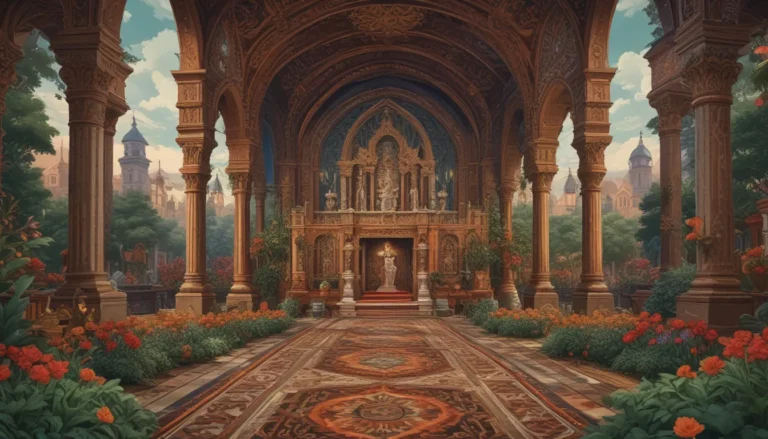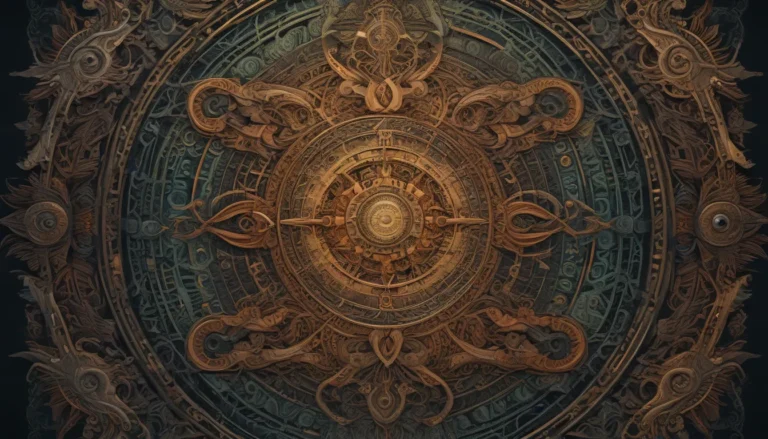The images in our articles may not match the content exactly. They are used to grab your attention, not to show the exact details in the text. The images complement the text but do not replace it.
Have you ever wondered about the rich traditions and celebrations surrounding Eid al-Adha, also known as the Festival of Sacrifice? This sacred holiday holds a special place in the hearts of Muslims worldwide, marking a time of reflection, unity, and generosity. Join us as we delve into 20 enlightening facts about Eid al-Adha that shed light on the significance and customs of this momentous occasion.
Embracing the Essence of Sacrifice
At the core of Eid al-Adha lies the profound concept of sacrifice in obedience to Allah. The name ‘Eid al-Adha’ translates to ‘Festival of the Sacrifice’ in Arabic, underscoring the theme of selflessness and devotion that permeates this auspicious holiday.
Revering Prophet Ibrahim’s Legacy
Eid al-Adha pays tribute to the unwavering faith of Prophet Ibrahim (Abraham) and his readiness to sacrifice his son as a testament to his obedience to God. In a powerful display of divine intervention, God provided a lamb for sacrifice instead, symbolizing the ultimate act of mercy and providence.
Marking One of Islam’s Major Festivals
As one of the two major Islamic holidays, Eid al-Adha stands alongside Eid al-Fitr as a cornerstone of the Islamic calendar. While Eid al-Fitr commemorates the end of Ramadan, Eid al-Adha signifies a time of spiritual significance and communal celebration.
Aligning with the Lunar Calendar
Eid al-Adha unfolds on the 10th day of Dhu al-Hijjah, the final month of the Islamic lunar calendar. The shifting lunar cycle means that the date of Eid al-Adha varies each year on the Gregorian calendar, adding an element of anticipation and spiritual renewal.
Linkage to the Hajj Pilgrimage
Inextricably intertwined with the Hajj pilgrimage to Mecca, Eid al-Adha culminates at the conclusion of this sacred journey. Muslims undertaking the Hajj experience a profound connection to the spirit of sacrifice embodied by Prophet Ibrahim, reinforcing their devotion to God and their fellow believers.
Embracing the Ritual of Qurbani
Central to Eid al-Adha is the ritual of qurbani, or sacrifice, where financially capable Muslims offer animals such as sheep, goats, cows, or camels in homage to Prophet Ibrahim’s sacrifice. This symbolic gesture serves as a reminder of the importance of surrendering to God’s will and acting with compassion towards all beings.
Embracing the Spirit of Generosity
Following the qurbani ritual, the meat from the sacrifice is divided into three parts: one for the family, one for friends and neighbors, and one for the less fortunate in the community. This act of sharing underscores the principles of charity and solidarity that define Eid al-Adha.
Embarking on the Eid Prayers
Eid al-Adha commences with the Salat al-Eid, a special congregational prayer that unites the Muslim community in worship and celebration. The atmosphere is imbued with reverence and joy as worshippers come together to offer thanks and seek blessings for the days ahead.
Embracing Festive Attire
A cherished tradition during Eid al-Adha is the donning of new clothes or one’s finest garments as a symbol of respect and joy for the occasion. The vibrant array of attire reflects the diversity of cultures and traditions that enrich the celebration of Eid al-Adha across the globe.
Promoting Acts of Charity
Charitable giving takes center stage during Eid al-Adha, underscoring the importance of generosity and compassion towards those in need. Muslims are encouraged to extend a helping hand to the less fortunate, embodying the spirit of community and benevolence that defines this sacred time.
Cultivating a Global Community
Eid al-Adha transcends geographical boundaries, bringing together Muslims from all corners of the world in a shared celebration of faith and unity. The universal observance of Eid al-Adha underscores the interconnectedness and solidarity of the global Muslim community.
Savoring Festive Feasts
A hallmark of Eid al-Adha is the indulgence in festive meals that showcase a diverse array of culinary delights, each reflecting the unique flavors and traditions of different cultures and regions. The communal feasts serve as a focal point for family gatherings and joyful festivities.
Strengthening Bonds with Loved Ones
The tradition of visiting family and friends during Eid al-Adha fosters a sense of warmth and togetherness, strengthening interpersonal relationships and building a sense of community. The exchange of greetings and well-wishes enhances the spirit of camaraderie and shared joy during this special time.
Exchanging Eid Greetings
A time-honored custom during Eid al-Adha is the exchange of greetings with the phrase “Eid Mubarak,” which translates to “Blessed Eid.” This simple yet heartfelt greeting encapsulates the spirit of goodwill and blessings that permeate the festive atmosphere of Eid al-Adha.
Embracing the Duration of the Festival
Eid al-Adha spans four days, from the 10th to the 13th day of Dhu al-Hijjah, offering ample time for reflection, celebration, and spiritual renewal. The extended duration of the festival allows for a deeper exploration of the themes of sacrifice, faith, and devotion that define Eid al-Adha.
Observing as a Public Holiday
In many Muslim-majority countries, Eid al-Adha is recognized as a public holiday, with schools and offices closing to allow for observance and celebration. The festive atmosphere permeates cities and towns, creating a sense of vibrancy and joy throughout the community.
Embracing the Tradition of Gift-Giving
Gift-giving is a cherished practice during Eid al-Adha, with special emphasis on presenting gifts to children as a token of love and joy. The exchange of thoughtful gifts fosters a spirit of generosity and appreciation among family members and friends, enhancing the festive experience.
Reflecting on Spiritual Themes
Eid al-Adha serves as a poignant moment for spiritual reflection and contemplation, prompting Muslims to ponder on the significance of sacrifice, faith, and obedience to God’s commands. The introspective nature of Eid al-Adha encourages believers to reaffirm their commitment to their spiritual journey and deepen their connection to their faith.
Reciting the Takbir
A hallmark of Eid al-Adha is the recitation of the Takbir, a form of dhikr that involves the repetitive chanting of “Allahu Akbar” (God is Great). This rhythmic invocation reverberates throughout Eid al-Adha prayers, evoking a sense of awe and reverence for the divine presence that permeates the festival.
Nurturing Unity and Brotherhood
Eid al-Adha serves as a beacon of unity and brotherhood within the Muslim community, fostering bonds of solidarity and compassion among believers. The collective prayers, festivities, and acts of charity that characterize Eid al-Adha underscore the shared values and aspirations that unite Muslims worldwide.
Unraveling the Mysteries of Eid al-Adha – FAQs
What is the significance of Eid al-Adha?
Eid al-Adha, also known as the Festival of Sacrifice, commemorates the willingness of Prophet Ibrahim to sacrifice his son as an act of obedience to God.
When is Eid al-Adha celebrated?
Eid al-Adha is observed on the 10th day of Dhu al-Hijjah, the final month of the Islamic lunar calendar, with the date varying each year on the Gregorian calendar.
What is the main ritual of Eid al-Adha?
The central ritual of Eid al-Adha is the qurbani, or sacrifice, where Muslims offer animals in remembrance of Prophet Ibrahim’s sacrifice as an act of devotion and obedience to God.
How is the meat from the qurbani distributed?
The meat from the qurbani is divided into three portions: one for the family, one for friends and neighbors, and one for the less fortunate in the community, embodying the spirit of sharing and compassion.
How is Eid al-Adha celebrated?
Eid al-Adha is celebrated with fervent prayers, festive meals, donning of new attire, visits to loved ones, gift-giving, acts of charity, and contemplation of spiritual themes that define the essence of the festival.
Elevating the Cultural Tapestry
Eid al-Adha stands as a testament to the rich tapestry of Islamic traditions and customs that unite believers across the globe in a shared celebration of faith, community, and compassion. The diverse array of practices and rituals that define Eid al-Adha serve as a vibrant mosaic of cultural heritage and spiritual devotion, inviting all to partake in the joyous festivities and profound reflections that mark this auspicious occasion.
Sources:
– Original Article: Source
– Additional Information: Source






